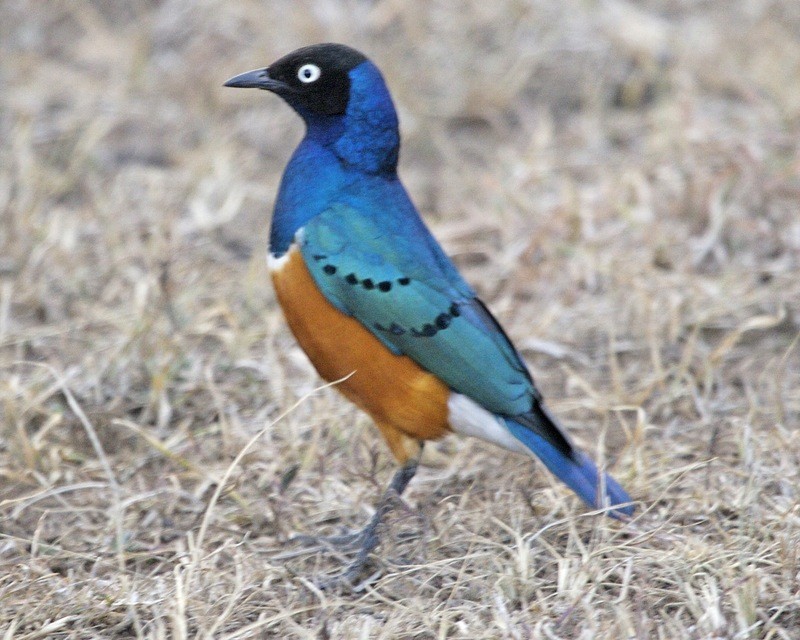Superb Starling
A species of Glossy Starlings and Allies Scientific name : Lamprotornis superbus Genus : Glossy Starlings and Allies
Superb Starling, A species of Glossy Starlings and Allies
Botanical name: Lamprotornis superbus
Genus: Glossy Starlings and Allies
Content
Description People often ask General Info
 Photo By Lip Kee Yap , used under CC-BY-SA-2.0 /Cropped and compressed from original
Photo By Lip Kee Yap , used under CC-BY-SA-2.0 /Cropped and compressed from original Description
This species is 18 to 19 cm (7.1 to 7.5 in) long. These small short-tailed starlings have a long narrow bill, robust bodies, strong feet and a distinctive plumage pattern. Adults have black heads and iridescent blue-to-green back, upper breast, wings, and tail. The belly is red-orange, separated from the blue breast by a white bar. The undertail coverts and the wing linings are white. Juveniles have duller plumage with no more than a suggestion of the white breast band. Their eyes are brown at first, later grayish white. The superb starling has a long and loud song consisting of trills and chatters. At midday it gives a softer song of repeated phrases. There are several harsh calls, the most complex of which is described as "a shrill, screeching skerrrreeee-cherrrroo-tcherreeeeeet." The appearance of the superb starling is very similar to Hildebrandt's starling, also found in East Africa. The superb starling is distinguished by having pale creamy-white eyes, as opposed to red eyes in the Hildebrandt's. Moreover, only adult superb starlings have a white breast band. 
Size
18 cm
Colors
Brown
Black
Green
White
Blue
Cyan
Life Expectancy
10-15 years
Nest Placement
Tree
Feeding Habits
Superb Starling mainly forages on the ground for insects like grasshoppers and beetles, worms, grains, fruits, and berries, frequently near acacia trees, showcasing a varied diet with opportunistic feeding behaviors.
Habitat
Superb Starling primarily thrive in diverse open woodlands, particularly favoring arid savannas dotted with thornbushes and acacia trees. They are adaptable to various altitudes, ranging from sea level up to 3,000 meters. These birds are often found in proximity to bodies of water, such as lakeshores, but they generally steer clear of humid lowland regions. Their versatility extends to human-altered landscapes, including agricultural fields and gardens, where they are known to coexist near human settlements.
Dite type
Omnivorous
People often ask
General Info
Feeding Habits
Bird food type
Distribution Area
This species has a very large range and can commonly be found in East Africa, including Ethiopia, Somalia, Uganda, Kenya, Sudan, and Tanzania. 
Species Status
Not globally threatened.